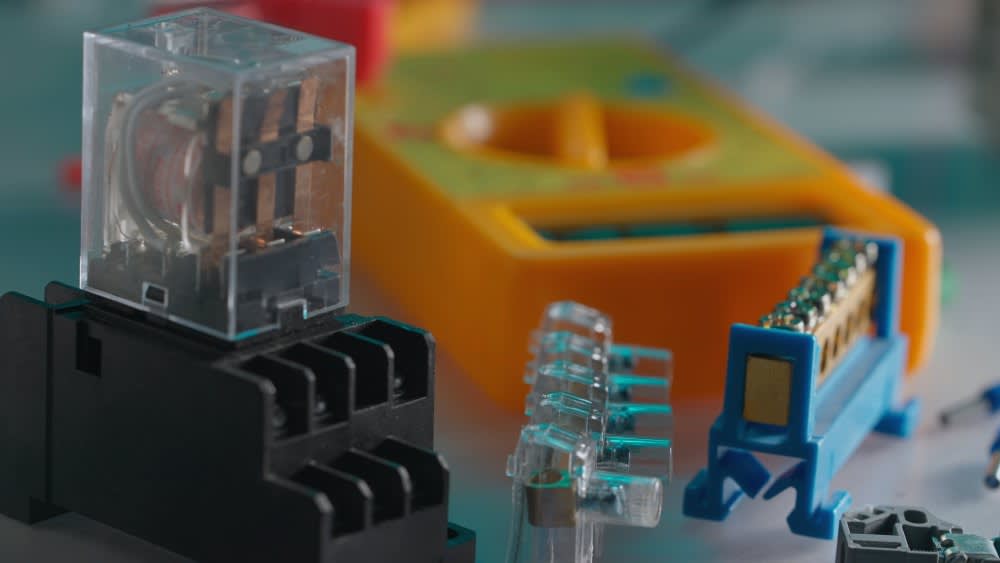- Published 9 Feb 2024
- Last Modified 9 Feb 2024
- 5 min
Energy-Efficient Relays: Reducing Power Consumption in Industrial Control Systems
Explore the benefits of energy-efficient relays in industrial control systems, their types, implementation, and how they contribute to sustainability.

In the realm of industrial control systems, energy efficiency is not just a buzzword; it's a critical operational component. The integration of energy-efficient relays marks a significant stride towards power savings, revolutionising how industries manage their energy consumption.
Energy efficiency in industrial settings is pivotal for both cost savings and environmental stewardship. By optimising power consumption, industries can significantly reduce operational costs while contributing to environmental sustainability. Energy-efficient relays therefore offer a practical solution to enhance the sustainability of industrial operations without compromising on performance.
Presently Malaysia’s National Energy Efficiency Action Plan focuses on conserving electricity usage across sectors. This is further complemented by the Green Technology Financing Scheme, which aims to incentivise businesses to employ energy-efficient technologies. That said, it’s apparent that taking the leap towards integrating energy-efficient relays in industrial control systems is the way forward.

What Are Energy-Efficient Relays?
Energy-efficient relays are advanced versions of standard electric relays designed specifically to minimise energy usage. Unlike conventional relays, they incorporate innovative features and technologies that reduce power consumption. These relays are engineered to provide the same functionality as traditional relays but with a significantly lower energy footprint, making them ideal for modern industrial applications.
Types of Energy-Efficient Relays
Energy-efficient relays come in various types, each suited for specific applications:
- Solid-State Relay (SSR): Employs semiconductors to control circuits instead of electromagnets and coils, thus offering silent operation and high-speed switching.
- Signal Relay (Latching): Maintains position with bistable mechanisms after being activated, saving energy by not requiring continuous power.
- Power Relay (Non-Latching): Handles high current loads and automatically returns to its default state when power is cut, ideal for heavy-duty industrial applications.
- Time-Delay Relay: Provides controlled timing functions, reducing energy wastage in processes requiring time-based operations.
- Reed Relay: Uses an electromagnetic coil and reed switch mechanism, known for its low power consumption and fast switching capabilities, making it ideal for telecommunications and security systems.
- Programmable Relay: Allows for customisable settings and operations, optimising energy use for specific tasks.

Benefits of Energy-Efficient Relays in Industrial Control Systems
Switching to energy-efficient relays in industrial control systems offers a range of benefits:
- Reduced Power Consumption: These relays use techniques like bistable latches and pulse triggering to reduce coil energisation, leading to significant energy savings in frequently cycled applications.
- Reduced Heat Generation: With minimised coil energisation, these relays generate less heat, enhancing equipment reliability and cutting down on cooling requirements.
- Enhanced Reliability: With less heat generation and wear, these relays offer more reliable performance in industrial settings.
- Lower Maintenance Needs: Reduced wear and tear leads to fewer maintenance requirements, saving on upkeep costs.
- Extended Equipment Lifespan: Thanks to reduced wear and tear on contacts, energy-efficient relays often outlast electromagnetic relays (EMRs).
How to Implement Energy-Efficient Relays
Effective integration of energy-efficient relays into industrial control systems involves several key steps:
- Compatibility Assessment: Evaluate the compatibility of the new relays with existing systems to ensure seamless integration.
- Operational Requirements Analysis: Understand the specific needs of your operation to select the most suitable type of energy-efficient relay.
- System Design Alignment: Ensure that the chosen relays align with the overall design and functionality of your control system.
- Cost-Benefit Analysis: Consider the long-term cost savings and environmental benefits against the initial investment in energy-efficient relays.
- Best Practice Adherence: Follow industry best practices in system design and relay selection for optimal performance and sustainability.
- Choose Reliable Relay Suppliers: Opt for reputable suppliers like RS Malaysia, known for quality and reliability in providing a wide range of energy-efficient relay options.
Popular Energy-Efficient Relay Brands
TE Connectivity
TE Connectivity has been at the forefront of engineering highly reliable and durable connectivity and sensing products, including advanced relays for various applications, from smart homes to electric vehicles.
Schneider Electric
Schneider Electric offers a comprehensive range of low-voltage electrical distribution and industrial automation products, including Tesys relays for safe and reliable power management solutions.